Teaching about Machine Learning
Machine learning is emerging into daily life, mediating social participation and providing foundations for new digitalized infrastructures in societies and workplaces. This development is driven by the collection (centralization) of large amounts of data, advances in handling and computing of (big) data and new business models which utilize these advances to turn data into value-assets. Through design experiments, co-design processes with teachers, and partnerships with organizations, I investigate how machine learning can be conceptualised for general education, how educational tools can become instruments for critical reflection, and how these tools can complement existing practices in classrooms. Here are a few examples from my projects.
Aligning Large Language Models in High School Classrooms
This new project fine-tune Danish large language models (LLMs) with data collected in Danish high school classrooms. In educational activities, students annotate data and provide feedback on LLMs' outputs. These activities have a double purpose: To capture students' values and preferences in the datasets and to engage and educate students about this process. Currently, we primality work in Danish subject claasrooms where students annotate sentences from H.C Andersen's Fairytales and novels from the Modern Breakthrough. With these datasets, we fine-tune the LLMs that teachers and students can use to engage with and understand litterature thorugh machine learning practices. The project is a collaboration between Danish Universities and high schools.
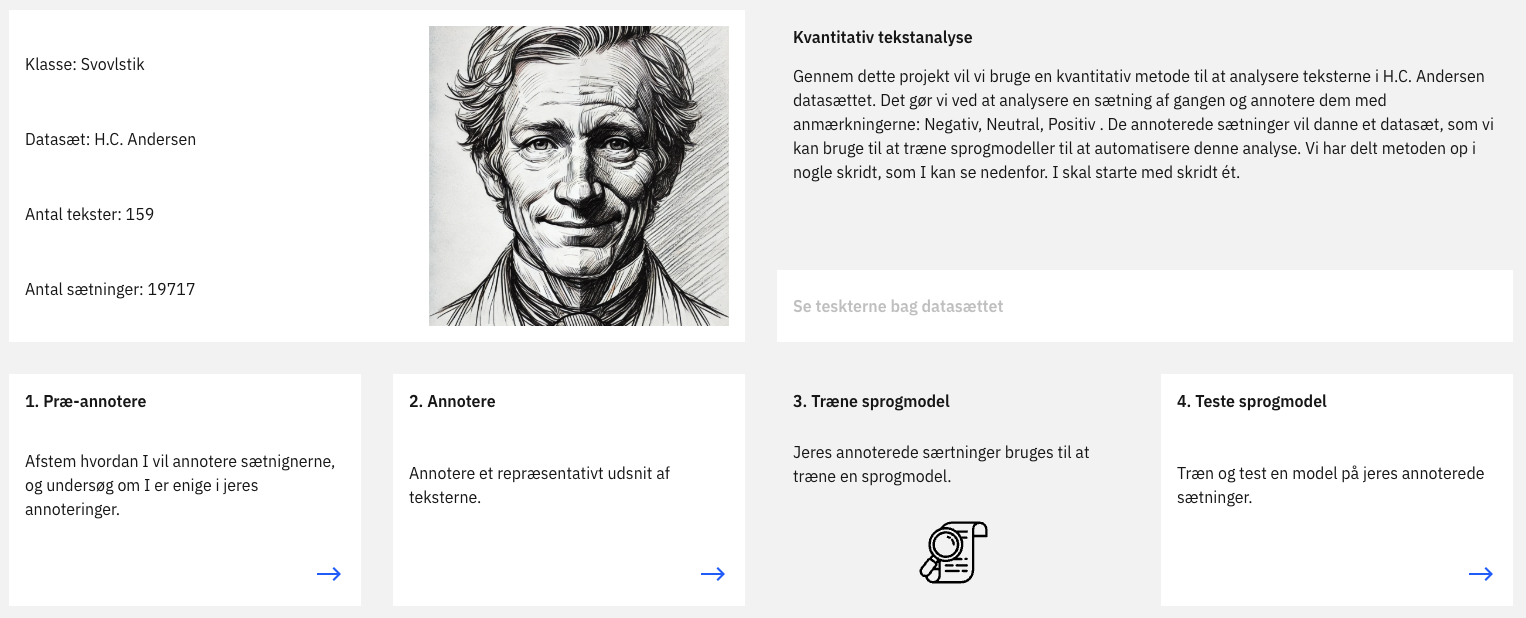
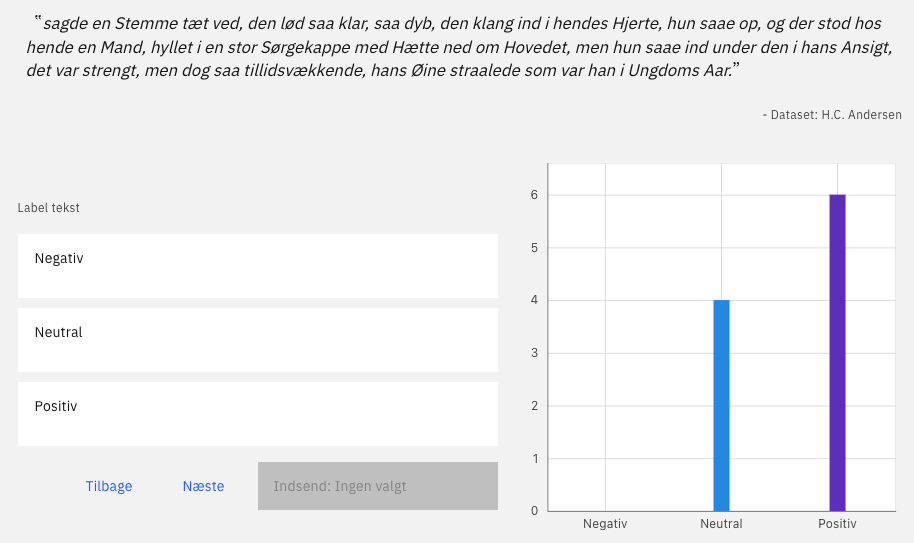

Teaching Machine Learning in K-12 Mathematics Classrooms
This project explores how machine learning can be taught in elementary and high school math classes through embodied activities with building machine learning models and direct manipulation of these models. We collaborate with elementary and high schools to design tools, activites and lesson plans that can enable teachers to integrate machine learning into their math classes. Educational resources will be published soon!
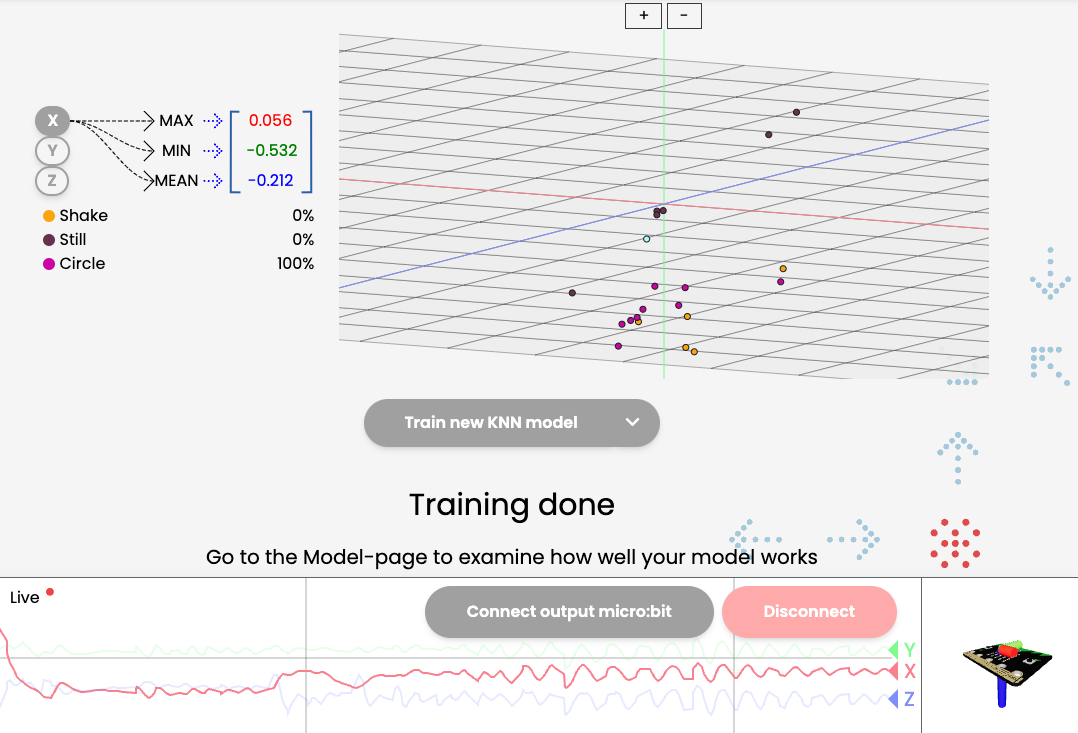
BBC Teach - Exploring Machine Learning
In collaboration with the Micro:bit Educational Foundation, we delivered the micro:bit machine learning tool for the BBC micro:bit playground survey - a learning resource for UK primary schools, benefiting 700,000 children. The design of the machine learning tool is based on our current research into how teachers can engage children in tangible experiences with machine learning. We’re excited to collaborate with the Foundation to bring the tool to this project and provide synergy between the most recent research and practices at UK schools. The survey consists of playful and educational exercises to help children aged 7-11 get to grips with data science and digital skills in a way that relates to their everyday lives. You find the micro:bit machine the eductional activities with the tool here.
Newz: The Micro:bit Educational Foundation has released a new version of the tool, called CreateAI.
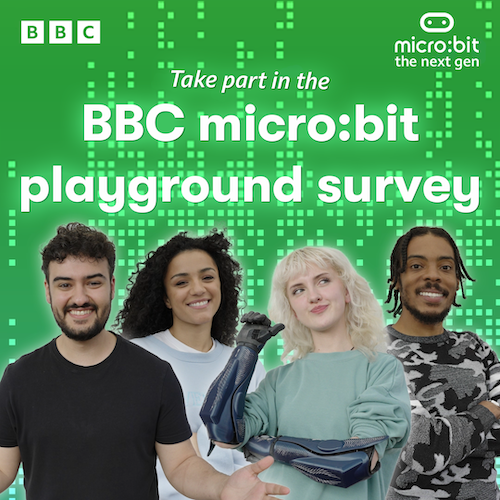
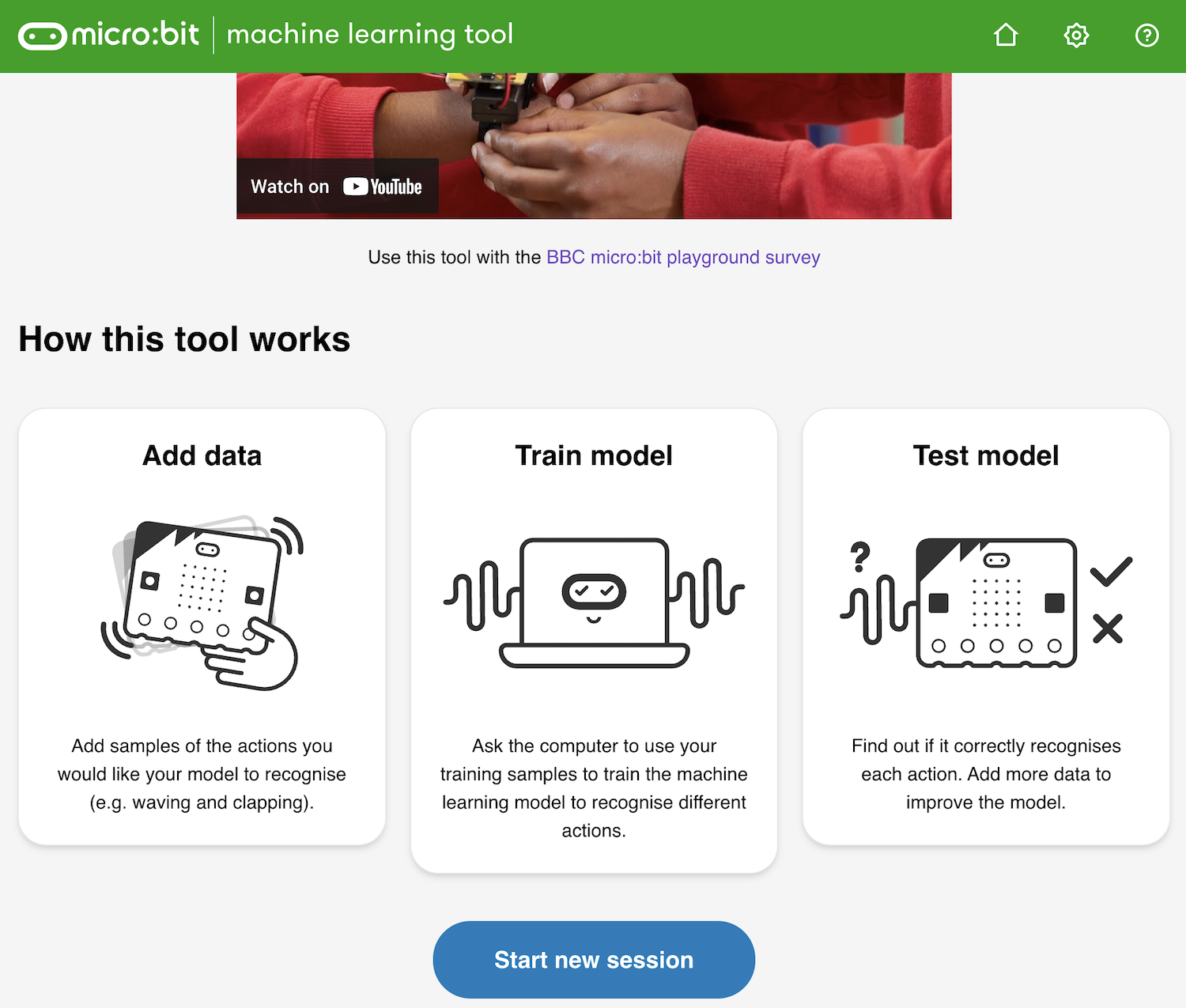
ultra:bit Datatrainer
The ultrabit datatrainer integrate into a collection of online learning material that we (fellow researchers and I) developed in collaboration with Denmarks radio (Danish public media provider, similar to BBC in England). The learning material is targeted the Danish subject in elementary school and is about artificial intelligens and social medias. It combines embodied machine learning activities with reflections on the social and ethical implications of machine learning. You can find the online learning material (in Danish) on DR Skole's webpage, look here ultrabit-datatraener.dk/ is a modified and branded version of ml-machine.org/ described below.
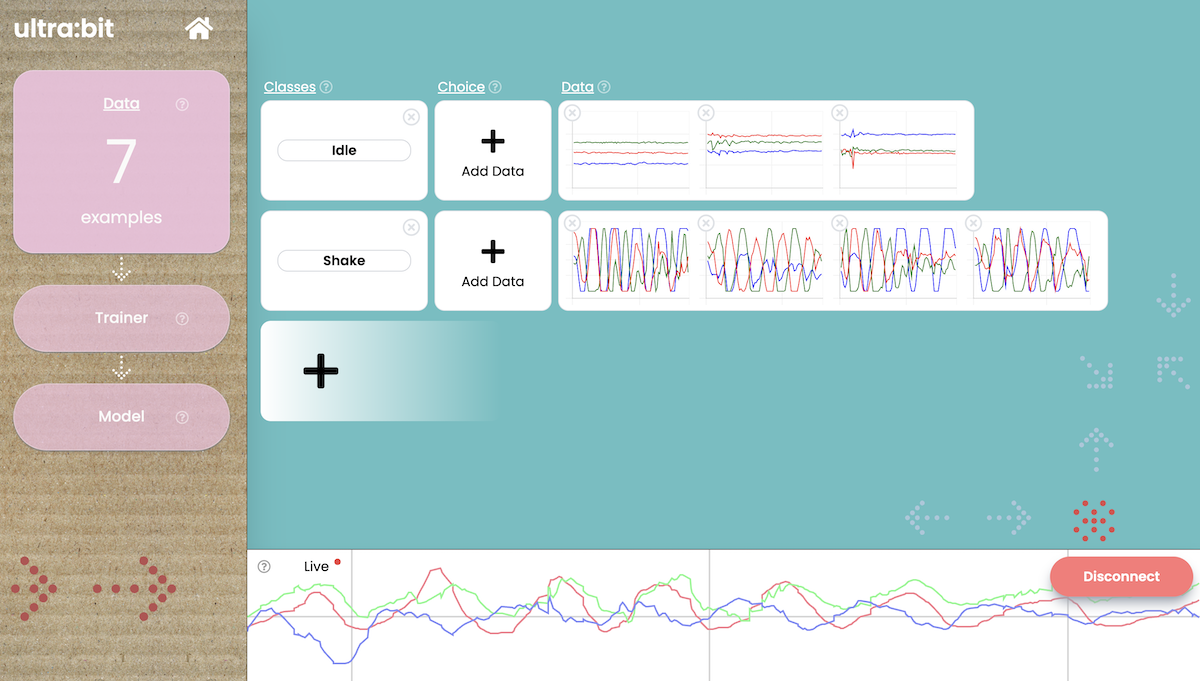
See one of the videos from the learning material:
ml-machine.org/
This project aim at prvoviding elementary and high school teachers with instruments to, on their own, teach about machine learning (ML) in their classrooms. It is designed to be easily accesible: It does not require prior knowldge about ML, you only need a laptop and MIcro:Bits (which both exist in danish classrooms) to use the tool, and, most importantly, the tool works impeccably throughout a whole teaching session. The tool is accompanied by instructional videos on how to use the tool and examples af teaching activities with the tool.
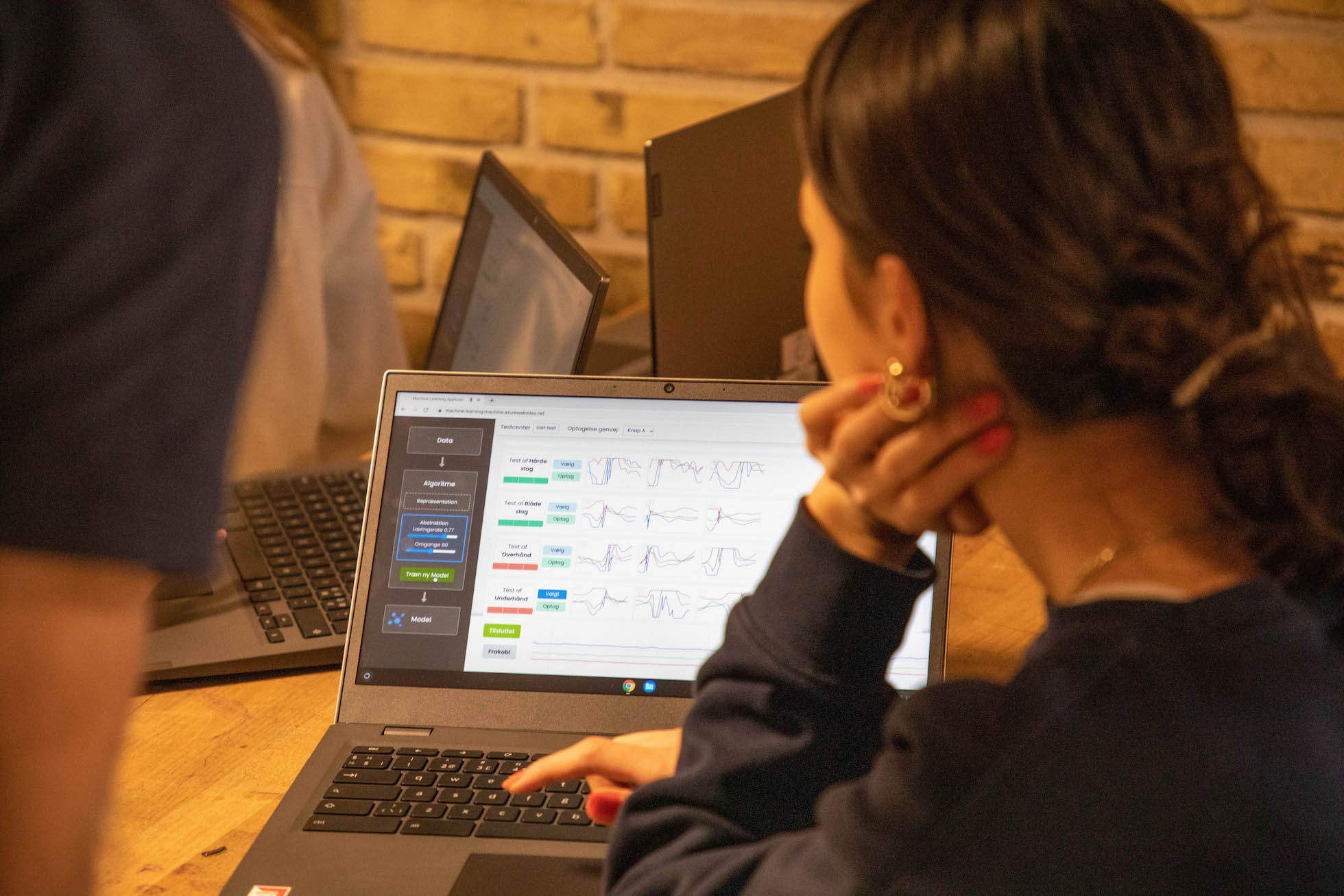
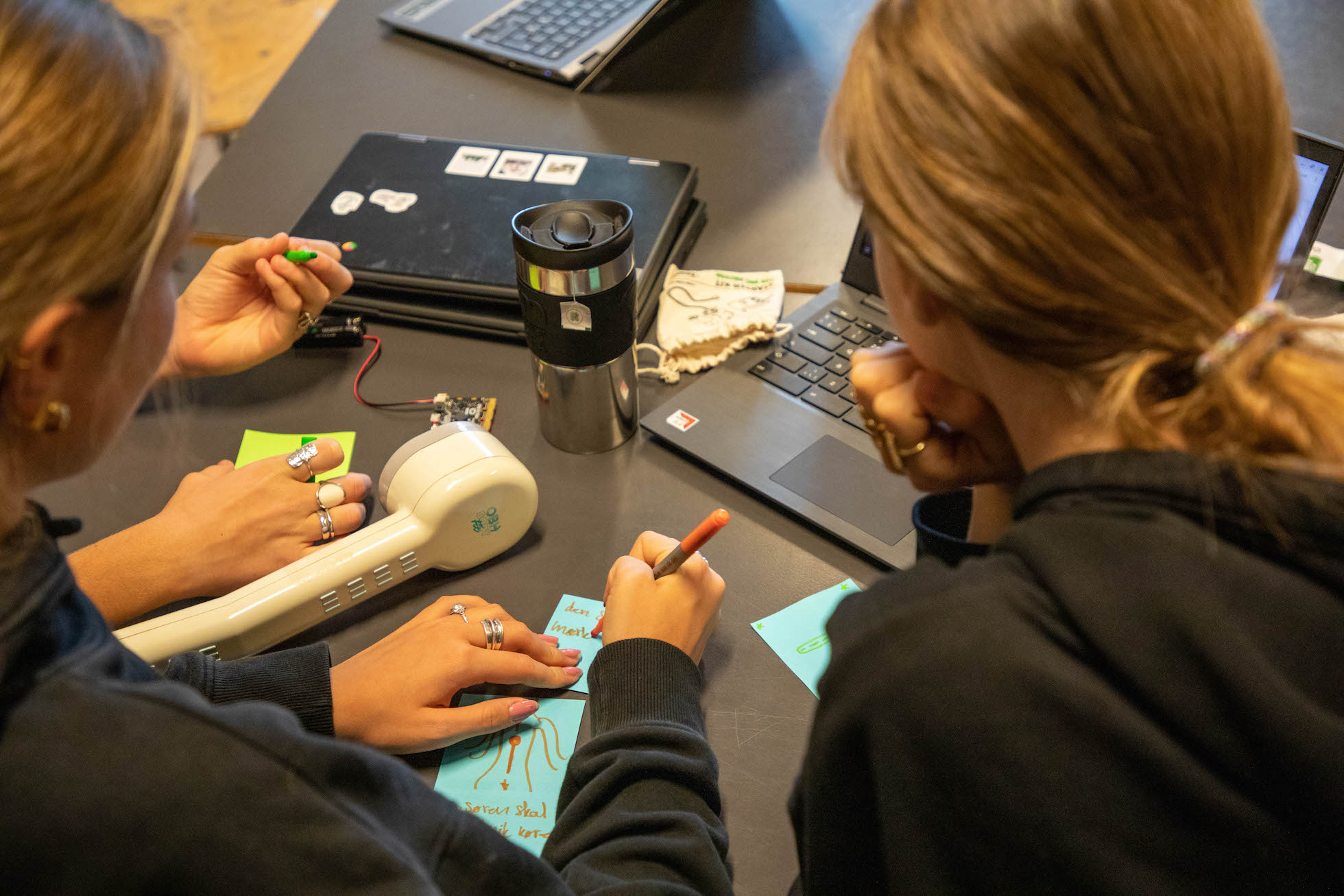
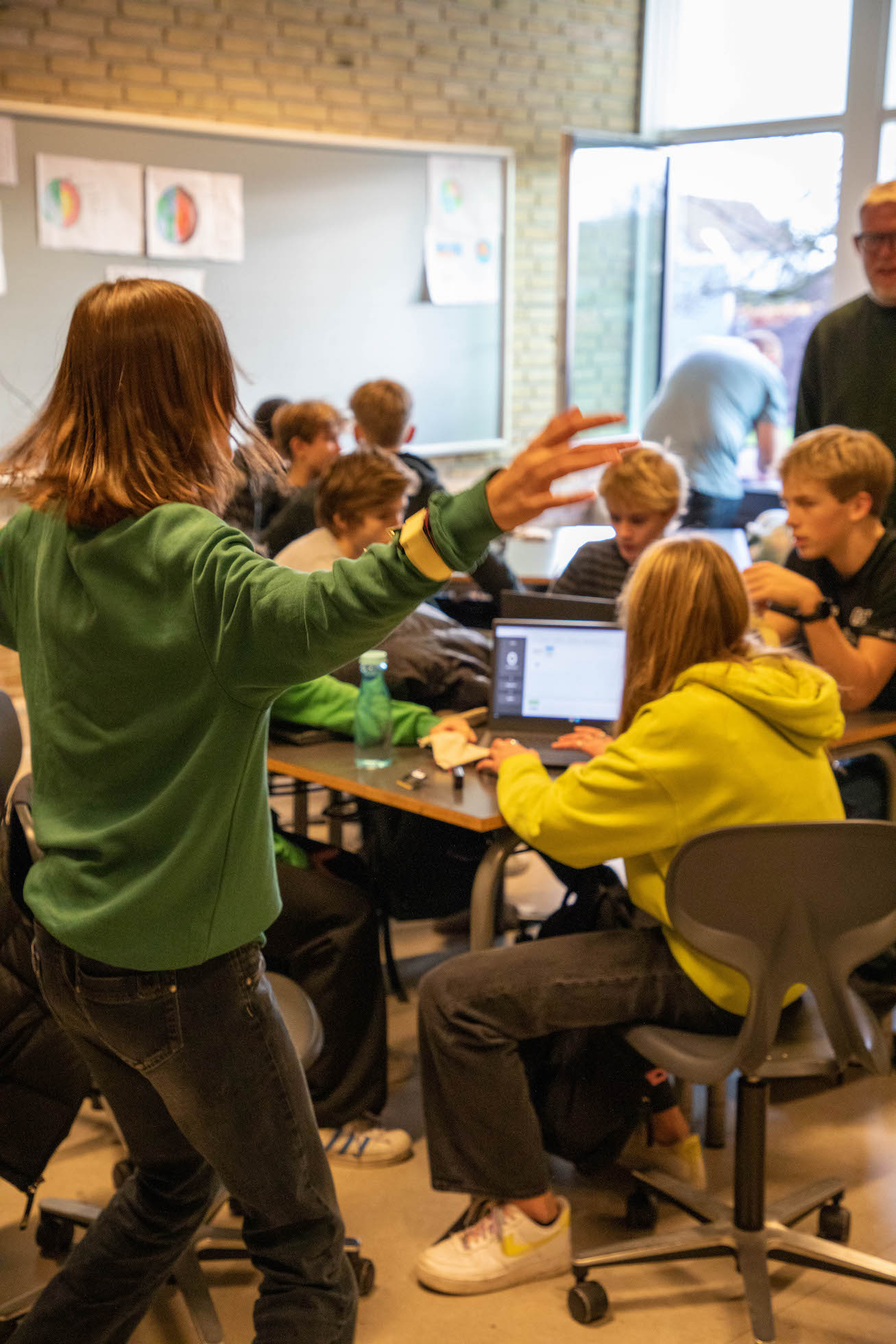
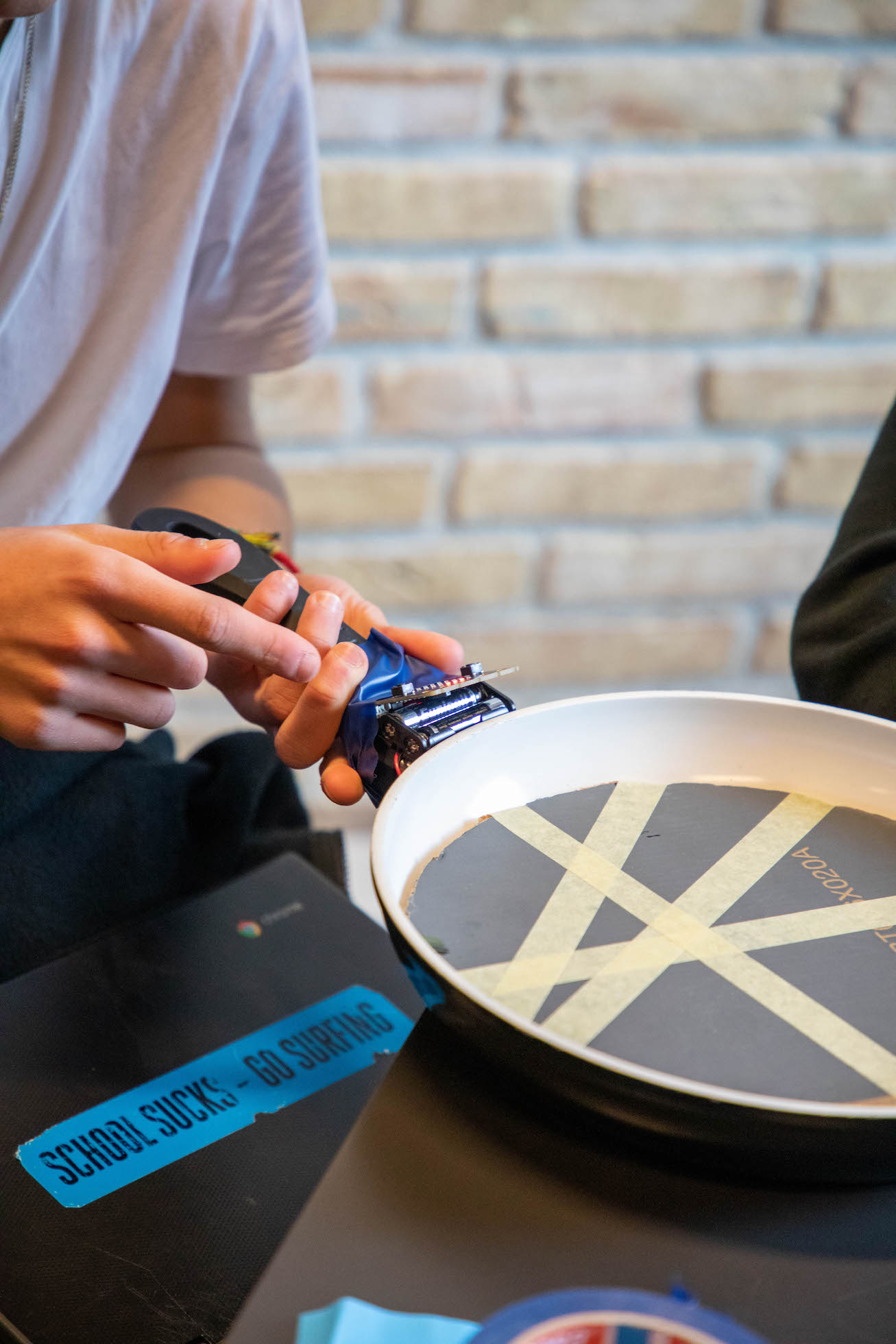
The tool consists of a webapp which connects to two BBC micro:bits and allows pupils to train and iteratively imrpove their own machine learning (ML) models. They use one micro:bit to collect accelerometer data and map the output of their ML model to the other micro:bit to create small interactive systems.
You can find tool here: ml-machine.org/
See the video:
VotestratesML
VotestratesML is centered around data and machine learning’s current and future role in political campaigns and democratic elections. How voters’ behavior can be modelled and, to some degree, predicted through machine learning models. Our web application enables students to collaborate on building models for predicting voter behaviour using real-life voter profile data.
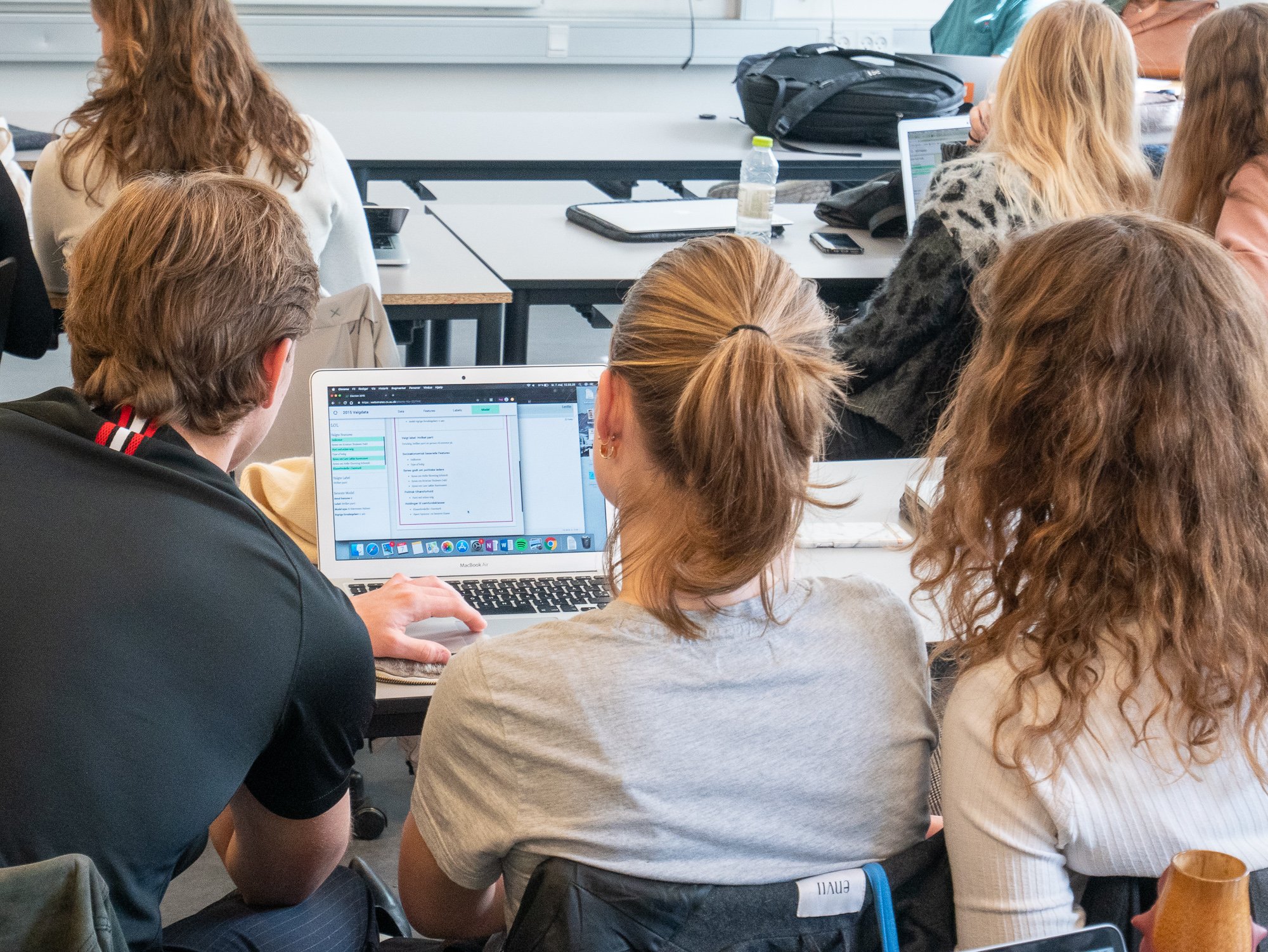
VotestratesML frames ML as a social studies tool, which can be used to achieve goals in the social studies subject. Instead of requiring students to “be good at math” or have an initial interest in ML, this approach allows students to utilise ML for achieving meaningful objectives and advance their proficiency as social studies students, while learning about ML along the way.
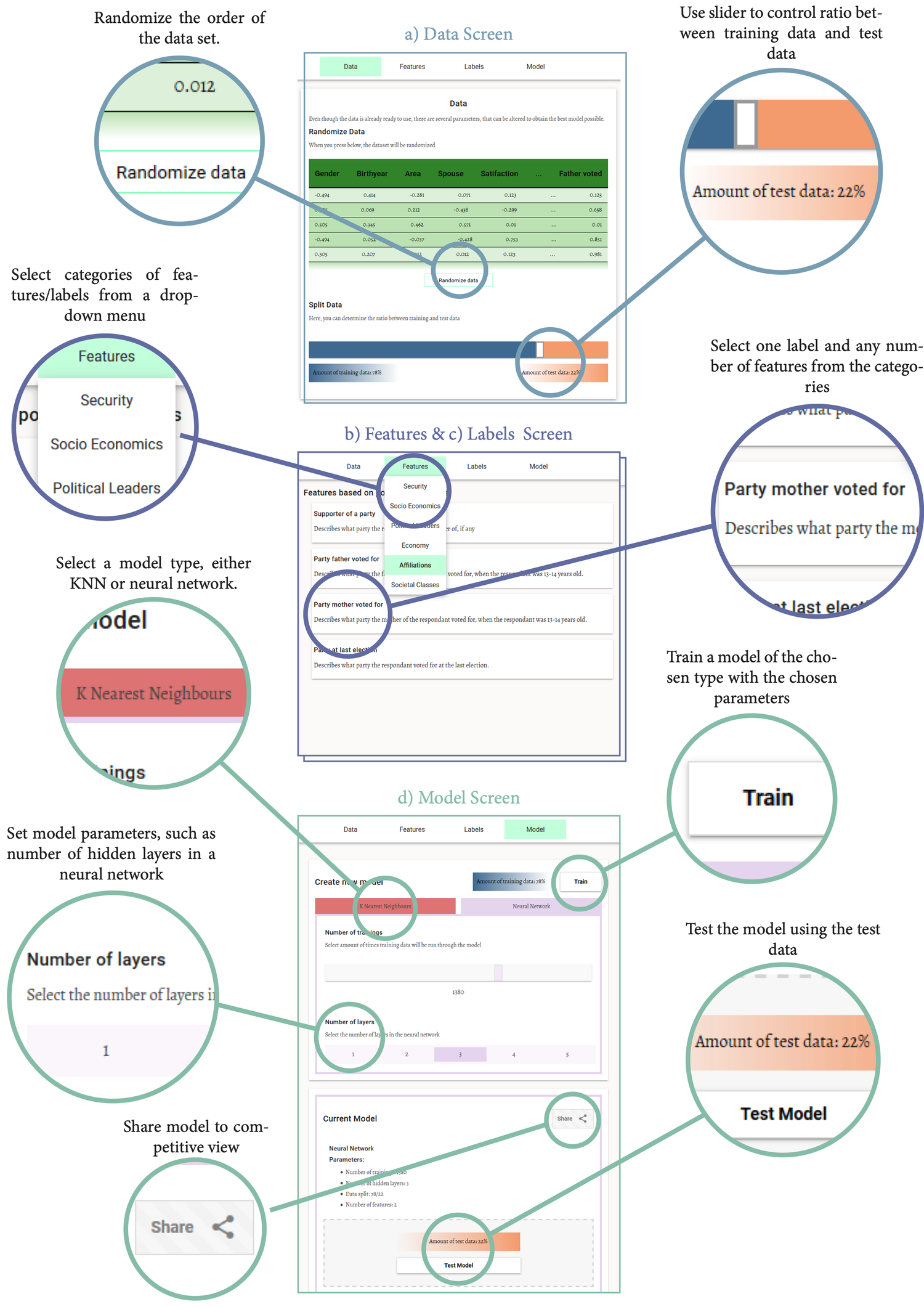
Personal KNN
Children grow up in a data economy but grasping how their data are part of this eco-system and how it becomes valuable to others can be difficult. This work explores how to design tools and activities which support children's critical data literacy for K-9 education. We bring together two strands of work; First, insights from a co-design process where teachers and researchers designed tools and activities for teaching critical data literacy which they deployed in a lower secondary education classroom. Second, insights from didactic theories from maths education about working with multiple and rich representations of complex and intangible phenomena.


In the first part of this activity, pupils embody a two-dimensional KNN model, acting as data points representing their own personal data. A coordinate system is drawn on the floor in a large room and pupils arrange themselves in the coordinate system according to the axis and, simulating the KNN algorithm with different values of K, asking their two, four and six closest classmates questions.
While the Embodied KNN activity can help pupils understand how their data can be aggregated and analysed, it leaves little room for further exploration of data and computational models. It is very instructional and each change to the model takes a lot of coordination between pupils and teacher. To complement the Embodied KNN activity, we designed the KNN Exploration Tool; a digital tool, which scaffolds pupils' in further exploring the class' data and build different KNN models. The tool uses data about the the pupils and the interface resemble the embodied KNN Activity. When pupils use the tools, they can draw on their experiences from the embodied activity to make sense of the visualisation and computations in the tool.
Machine Learning Machine 2.0
Machine Learning Machine (MLM) 2.0 builds on top of the original MLM (described beneath). It is a tiered hybrid interface allowing learners to create simple machine learning (ML) models using a TUI and further inspect and tinker with them using a GUI. This design experiment investigate how the two interaction styles can complement each other when used in the same educational tool to make ML concepts more approachable and graspable. The MLM 2.0 was designed in a co-design process with teachers and tested in a pilot study with pupils aged 13 to 15.
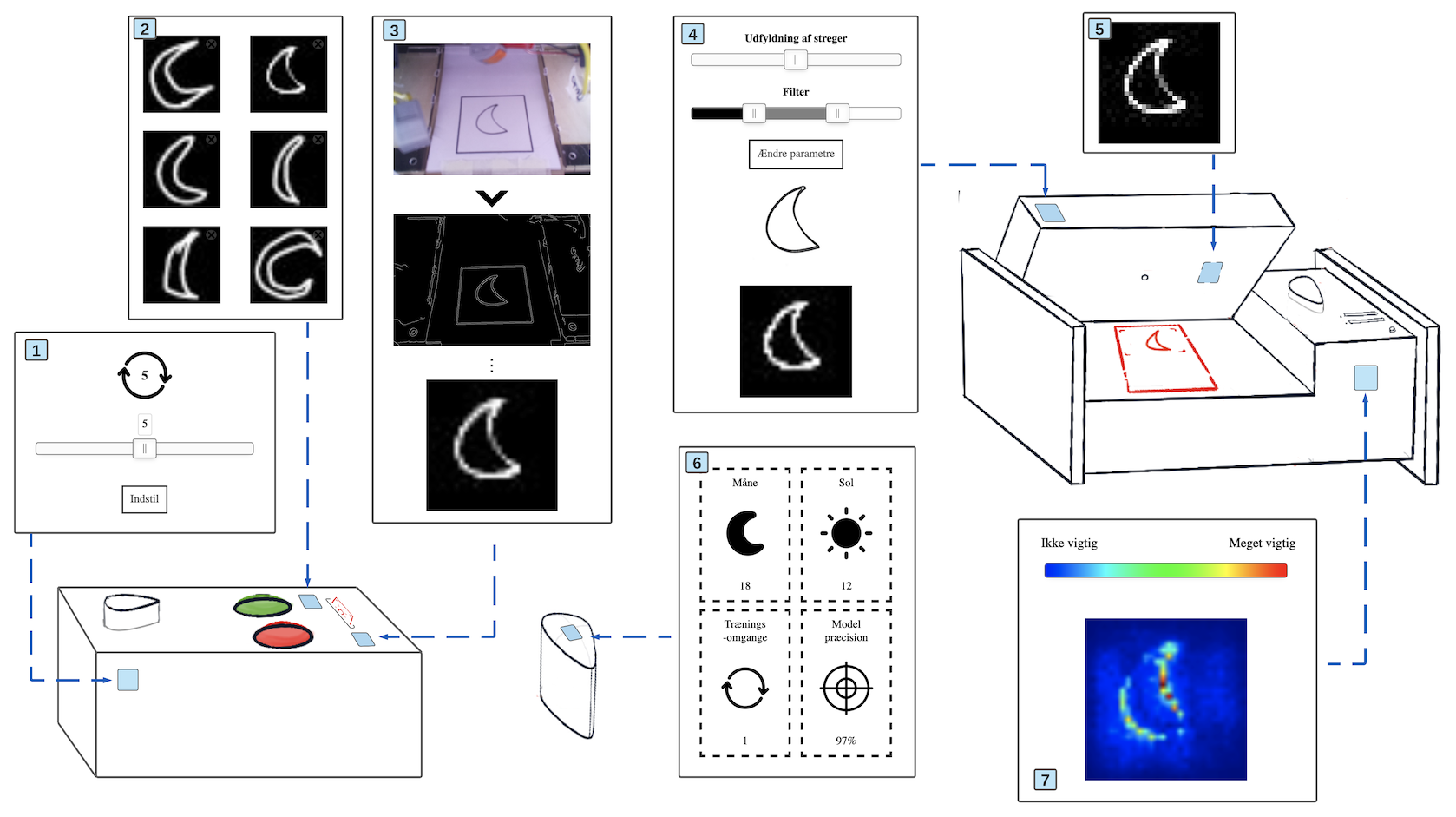
The tangibel interface of the MLM 2.0 is equipped with QR codes both on the Trainer, Evaluator and Model artefacts, that can be inspected using a smartphone. We exemplify with MLM 2.0 our take on a tiered hybrid interface that provides layered scaffolding as learners progress towards a deeper understanding of machine learning. Learners freely transition from one interaction style to another, connected by the same interaction metaphor. The TUI black-boxes the computational operations inside the physical boxes. The black-boxing makes it easier to approach the system as it strips away complexity, but it also makes it difficult to grasp how and what the system learns from pupils' drawings, and the training process can appear as a neutral process and not one dependent on human design and decisions. The GUI enables learners to un-box parts of the complex, computational processes. We take advantage of the physicality of the TUI by mapping different web pages and their functionality to the TUI through the placement of the QR codes, as these are placed close to the step in the process that can be investigated/manipulated by accessing them (e.g., the QR codes for investigating each dataset, are placed next to the buttons for categorising data,
Machine Learning Machine
Machine Learning (ML) is often used invisibly in everyday applications with little opportunity for consumers to investigate how it works. We expand recent efforts to unfold what students should know about ML and how to design tools and activities allowing them to engage with ML. To do so, we explore how to make processes and aspects of ML tangible through the design of the Machine Learning Machine (MLM); a tangible user interface which enables students to create their own data-sets using pen and paper and to iteratively build and test ML models using this data.
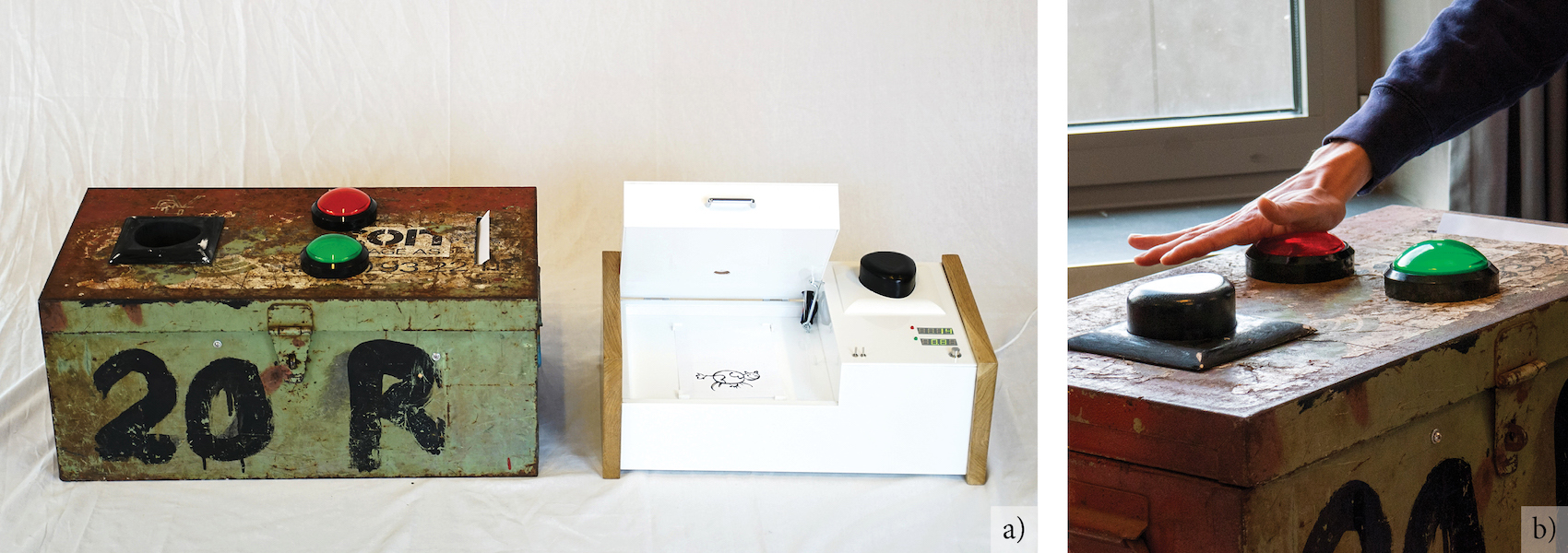
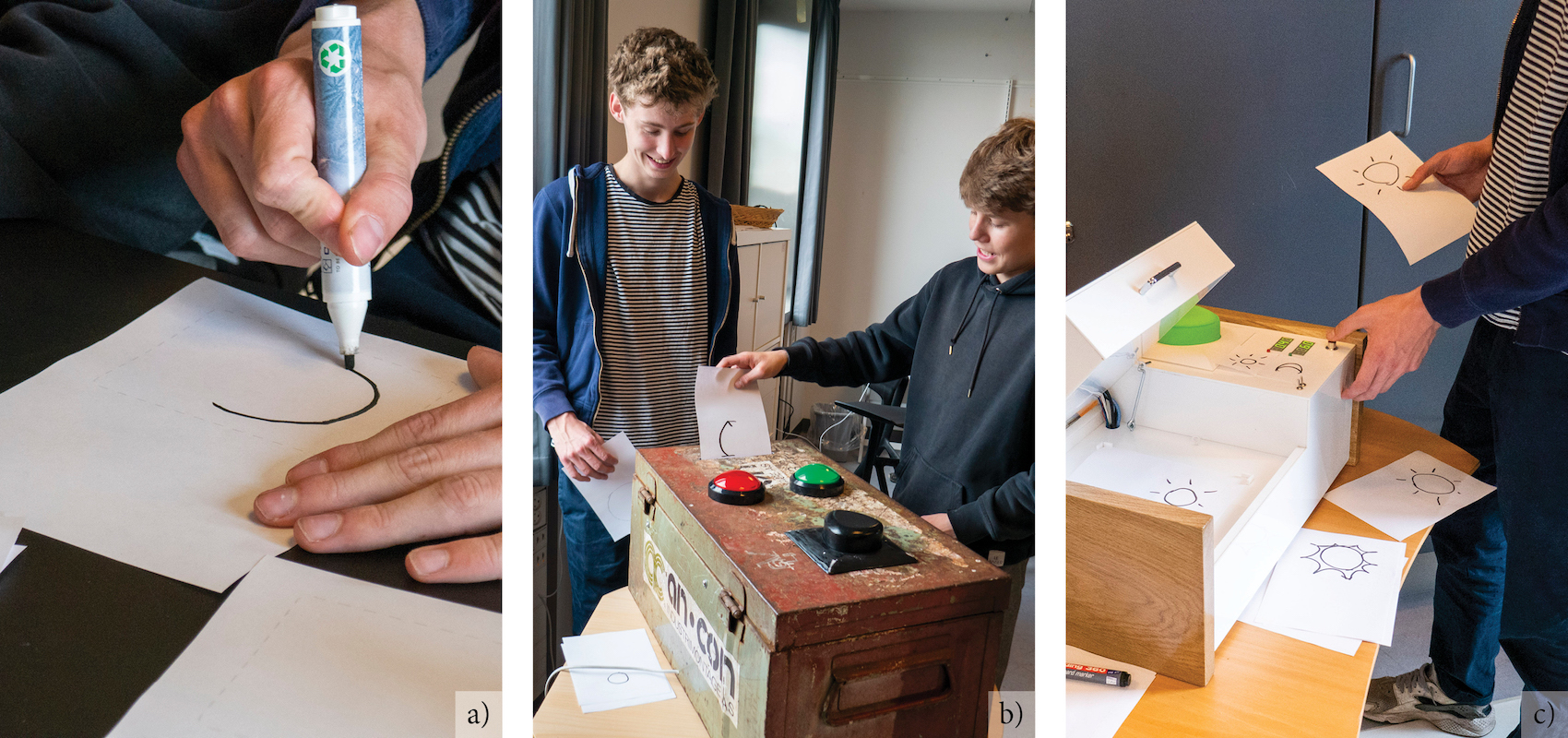
The MLM is a learning tool which enables K-12 students to iteratively work on ML models for binary classifications of doodles they draw using pen and paper. It consists of two separate devices: the Trainer, a big industrial looking metal box which provides a simple interface for labelling data and training ML models; and the Evaluator, an instrument inspired by laboratory equipment for analysing and evaluating ML models' performances. Besides the two units, the ML model that learners build is represented by a physical artefact. This model is moved between the two units to either train or evaluate the model. The MLM is designed to be used in a learning context with students (and teachers) who have no, or little, prior knowledge of ML.
Machine Learning Ethics Workshop
The increased use of machine learning (ML) in society raises questions of how ethical dilemmas inherent in computational artefacts can be made understandable and explorable for students. To investigate this, we developed a card-based design workshop that allows students to reflect on ethical dilemmas by designing their own ML applications. The workshop was developed in an iterative process engaging four high school classrooms with students aged 16-20. We found that scaffolding students in designing meaningful ML systems served to qualify their ethical reflections. Further students' design processes allowed them to engage with the ethical dilemmas and to tie these to the properties of the technology and to their design decisions.
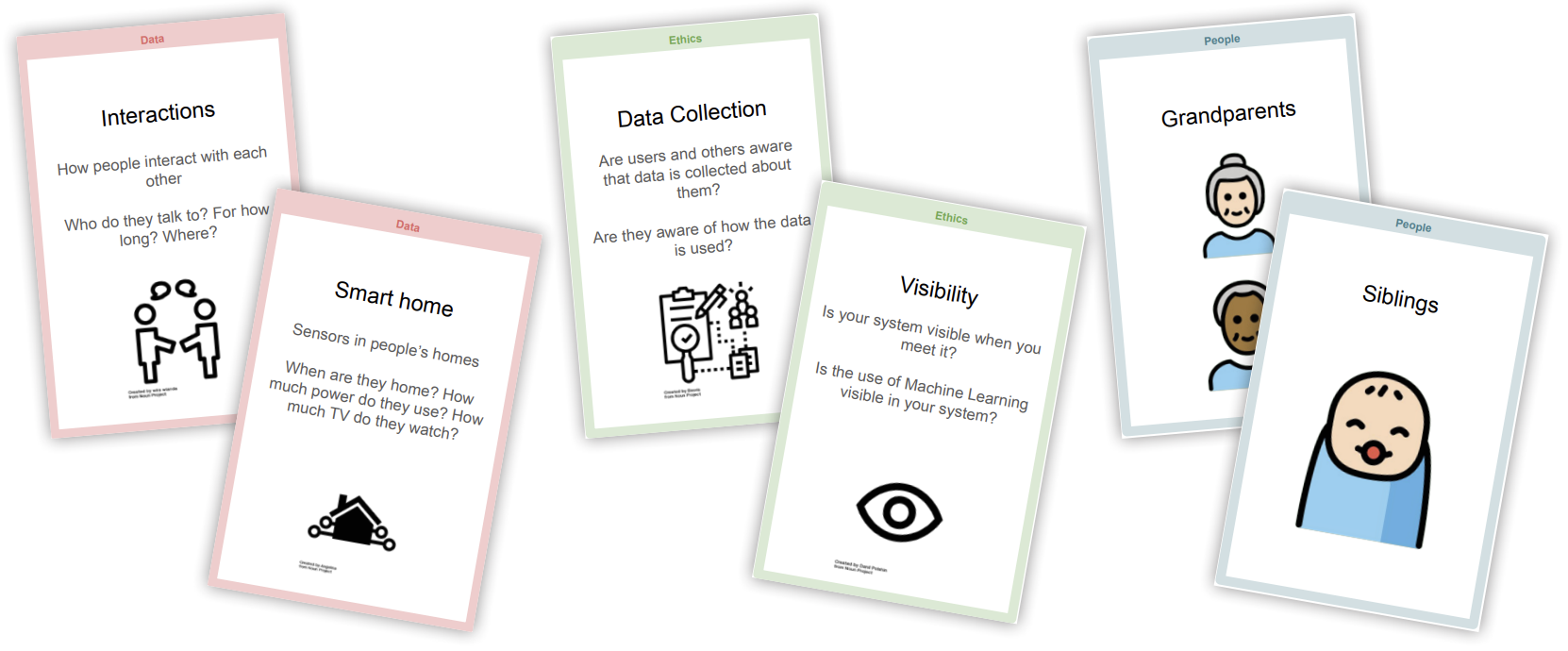

In groups, students design and describe a ML application for helping themselves and their peers in their everyday lives. Halfway through the process students are challenged with the ethical implications of implementing their application in a real world setting. To address these implications, they must redesign their application, dealing with ethical issues, which only become more complex as they discuss them, and weight these against the functionality and user-experience of their application.


